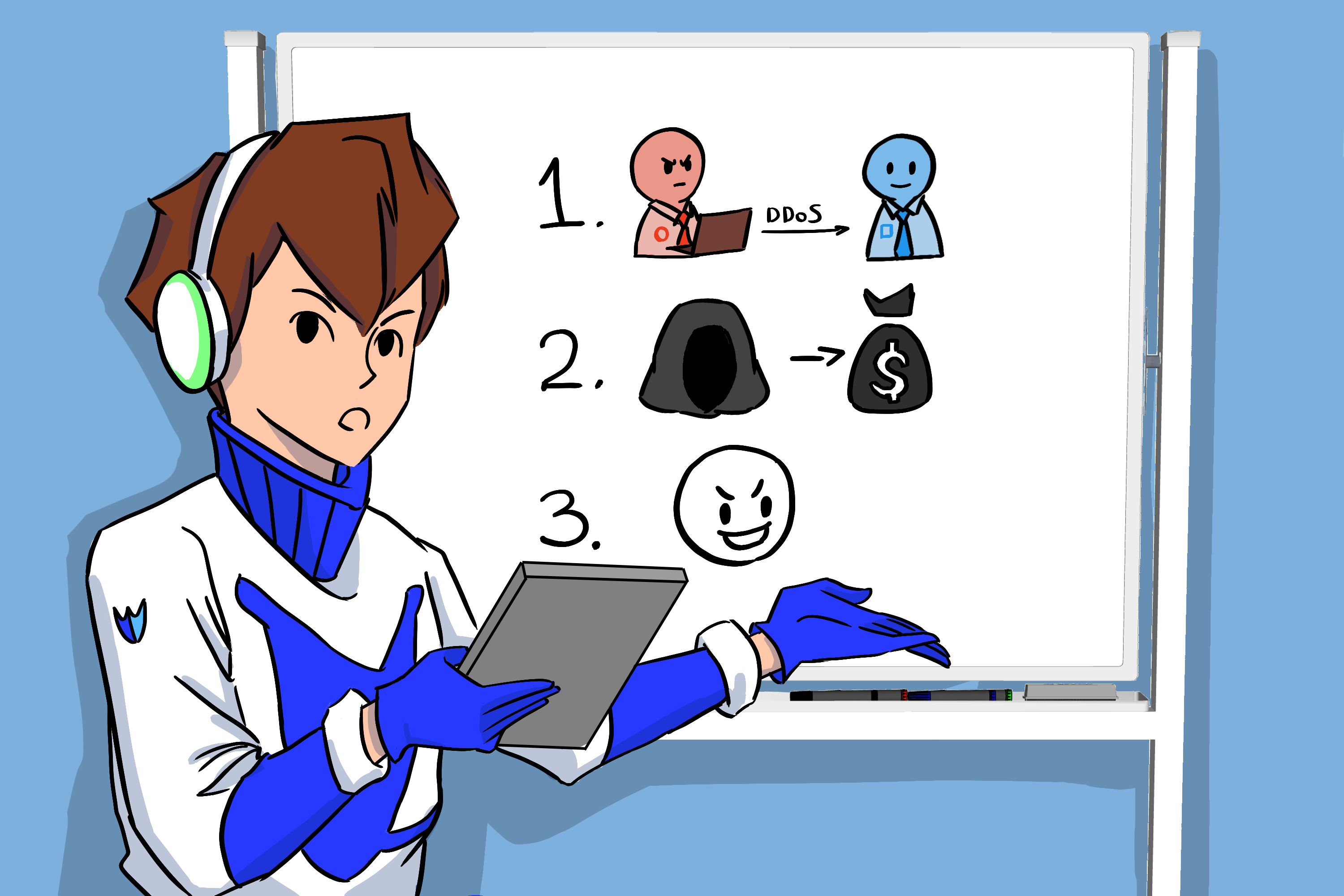Today, distributed denial-of-service attacks are the most popular means of impacting any online resource. They require relatively little effort to execute and create too much complexity to track down the attackers. But who are the DDoS attackers hidden in the virtual network? We can distinguish three main categories of hackers who use the same methods for different purposes.

Competing Companies
Cybersecurity companies regularly research surveys of their customers. More often than not, the affected party cites its direct competitors as the mastermind of a DDoS attack. It is easy to come to this conclusion after analyzing the consequences of an attack. As a rule, competitors are not interested in stealing user data. They simply block the operation of a particular website by flooding the server with numerous requests. The company is forced to go offline, which is inefficient for business today. Network failures irritate users. For example, delaying the launch of sales of a new product/service due to a DDoS attack by competitors can lead to loss of reputation and customer churn.
Earnings from Blackmail
This category of cybercriminals is in constant search of new victims. They often use phishing attacks to find vulnerabilities in a selected online resource. They need as many infected computers, IoT devices, or mobile gadgets as possible to conduct carefully planned and constantly changing multi-vector DDoS attacks. Only sophisticated attacks capable of adapting to the mitigation policies and capabilities of the attacked organization can guarantee payment. Using ransomware, attackers put the victim in a hopeless situation. As a result, companies agree to the terms offered, paying a certain amount in cryptocurrency. Hackers are still masters of the situation, stopping or launching DDoS attacks whenever they feel like it.
The Desire to Have Fun
The availability of open-source tools for organizing DDoS attacks is called the main reason for the emergence of a large number of hackers who want to have fun. Of course, they can be professionals in their business and block sites in retaliation for some unpleasant repost or ban. But more often than not, those who want to have fun launching a DDoS attack turn out to have minimal technical acumen.
Professionals have fun too. Hackers are ambitious and can remind about themselves at any moment. They are capable of paralyzing the work of any online service for a few hours, entertaining themselves by showing website visitors an image of some cartoon character or a more sinister splash screen.
Learn more: Why DDoS Attacks Happen
Hacker Groups
Cyberattacks carried out by organized hacker teams, leverage advanced technology to conceal their activities and avoid detection. Despite their secretive methods, many of these groups openly boast about their exploits, frequently making headlines.
Learn more: Famous Hackers Groups
Conclusion
In this article, we have focused only on the most popular sources of DDoS attacks. Of course, there are others. For example, some attackers choose victims solely for ideological and political reasons, others — for PR. The multitude of targets and the growing scale of campaigns point to one thing — the number of victims of DDoS attacks will increase. To avoid falling into their ranks in the future, we recommend taking care of your safety now.

DDoS Protection for Websites
- Activate protection in 10 minutes
- 24/7 technical support




















